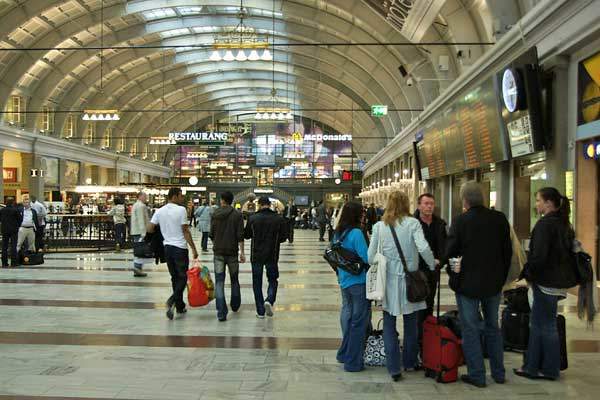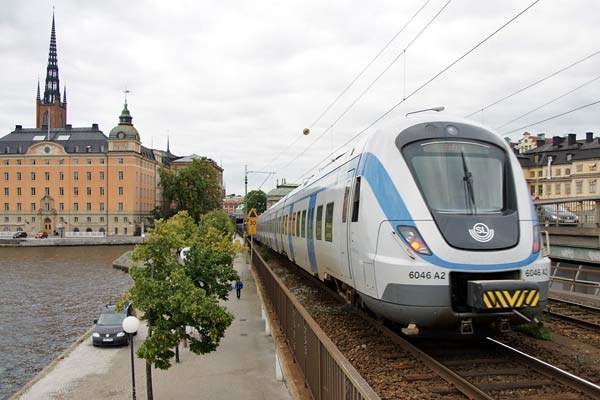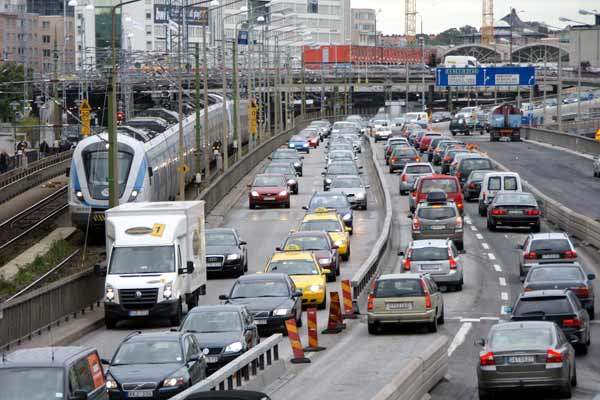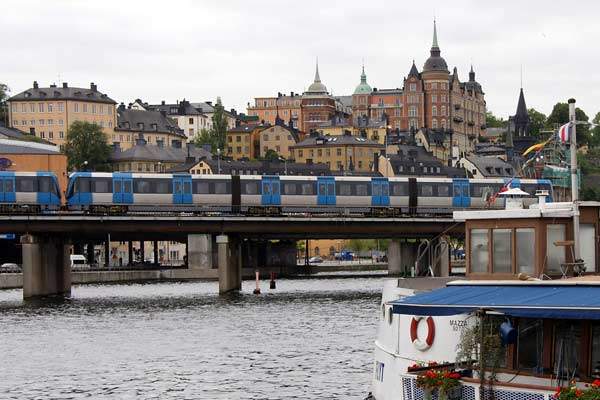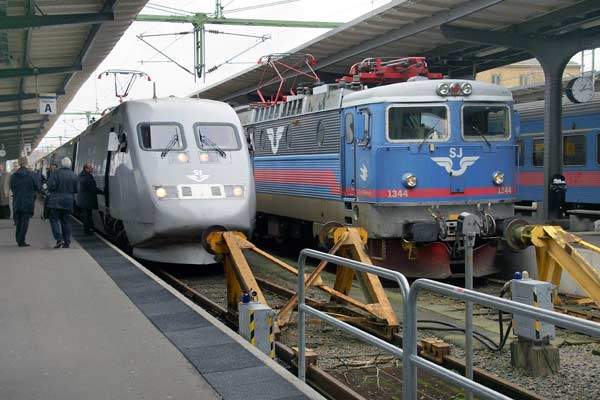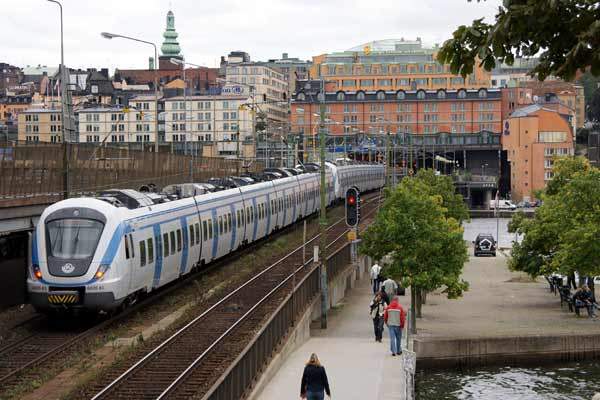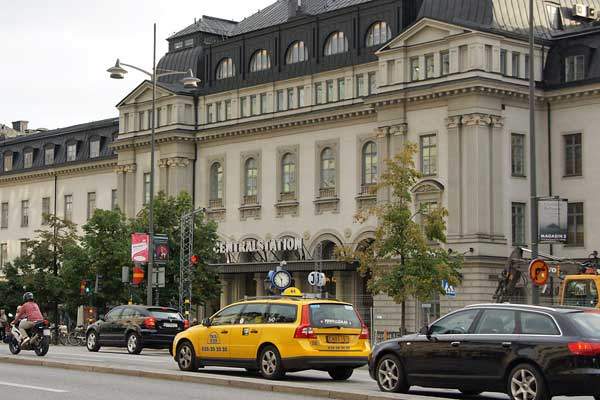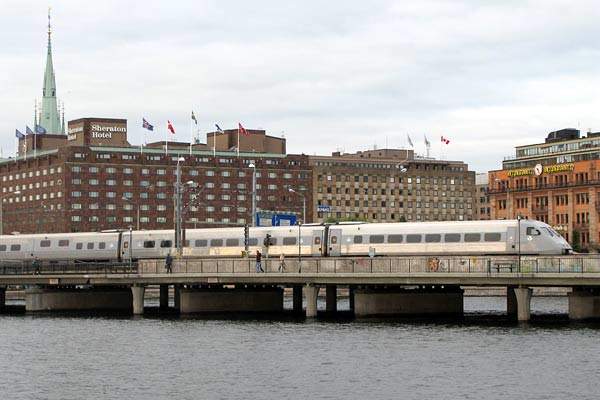Home to over a fifth of Sweden’s population and the centre of government and finance, the capital Stockholm is also by far the country’s busiest rail centre. A metropolitan area with a population of around 1.75 million, Stockholm is also the most demanding for local and regional public transport.
Located in the south east of Sweden, it is where the country’s main long-distance passenger and freight rail routes converge. Just inland from the Baltic shore on a site originally influenced by military considerations, Stockholm is partly spread over a group of 14 rocky islands that have created their own challenge for transport links.
The project
Rail routes immediately south of Stockholm Central currently meet up on two tracks as they have since the station opened in 1871. Now carrying 550 trains daily, a 2004 official report on the region identified the tracks as "The Wasp’s Waist – Stockholm’s Jugular Vein".
This reflected the fragility and importance of this infrastructure over water to Riddar Holmen (the island adjoining the old city site, Gamla Stan) and across a second inlet to the larger Sodermalm.
Routes subsequently diverge to destinations in Sweden’s relatively populous south which includes the next largest cities, Gothenburg and Malmo. Except for that of the separate Tunnelbana (metro) system, the double tracks carry all southern rail traffic. Not only is capacity severely limited, any operating problems can knock-on at great distances over the national rail system.
Although tracks were doubled or quadrupled at various points around Stockholm in the last decades of the 20th century, Central Station’s southern approaches remain the great limiting factor for service improvements.
Proposals for greater capacity go back decades and many potential solutions have been advanced. A feasibility study for a new tunnel-based line was completed in February 2002. The scheme, the Citybanan (City Railway), subsequently came close to cancellation in favour of adding a third track, but government approval was given in spring 2007, with preparatory works under way by 2007.
Now Sweden’s biggest rail infrastructure project, it envisages the numerically dominant commuter trains (Pendeltåg) being transferred to Citybanan, with freight and other passenger services continuing to use the surface route.
Infrastructure
The project is led by the Swedish rail authority and infrastructure body Banverket. Citybanan will largely be in a an approximately 6km (3.7 mile) twin-track tunnel that will diverge from present tracks in the north near Tomteboda, passing beneath the city centre initially to the east of the current line, switching to the west side near Stockholm Central.
It will run under the Riddarholmen islet and Norrström and Söderström channels before rejoining the system near Stockholms södra (southern), currently the second busiest station on the SL commuter rail network after Stockholm Central.
Two new stations, both underground, will be added. The northerly Odenplan will have an interchange with metro services on the T17-19 Green Line. About 40m below the surface, the larger Station City will adjoin the present metro station T-Centralen through which all present metro routes pass.
The site lies on the city-centre side of Stockholm Central. For noise and climate control and to reduce the potential for service disruptions, it is planned that platforms at the two new stations are fitted with platform edge doors, the first in Stockholm.
Rolling stock
The SL latest commuter stock is the 160km/h (100mph) X60, an order of 71 for delivery up to 2008 built in Salzgitter in Germany, part of the Alstom Coradia Lirex range. Provided Citybanan proceeds as scheduled, these should see service over the new line, although other current SL stock will have been withdrawn.
Signalling and communications
The three-line 200km Storstockholms Lokaltrafik AB (SL) commuter network with 50 stations (Stockholms pendeltåg) is operated by SJ subsidiary Stockholmståg. SL and mainline trains use the same system, so Citybanan will be fitted with a common signalling system and the standard 15kV overhead supply. Ticketing is already within a common system across all modes under SL control.
The future
Sweden’s fastest-growing economic region, Stockholm also has the country’s highest reliance on public transport at over 40% and growing. With capacity freed by Citybanan from an opening by 2017, substantial increases and rescheduling of longer distance services become possible, for example a southern extension of the dedicated Arlanda express airport service.
After official resistance to development of high-speed lines, the policy appears to have changed. Indicative of the projected growing demand providing the rationale for Citybanan, in 2008 Banverket submitted proposals for routes to the south and west from Stockholm to be developed over the next two decades.

